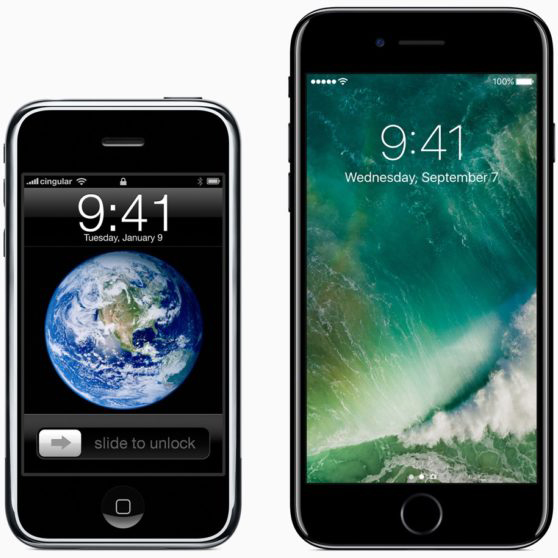
The iPhone is 10 years old now and we would like to pay a tribute to the original iPhone 2G and appreciate how far technology has evolved since its debut on June 9th, 2007.
First off, in the image above, we see the iPhone 2G on the left dated by the no longer exinsistant carrier Cingular located in the top left of the phone. Also, please take a second to admire the image of the earth on the lock screen, because the lock screen is the only place you could customize your phone with an image. The original iPhone’s hardware was not fully capable of having a wallpaper image on the home screen. In fact, wallpaper backgrounds weren’t introduced until 3 years later (2010) along with the release of iOS 4.
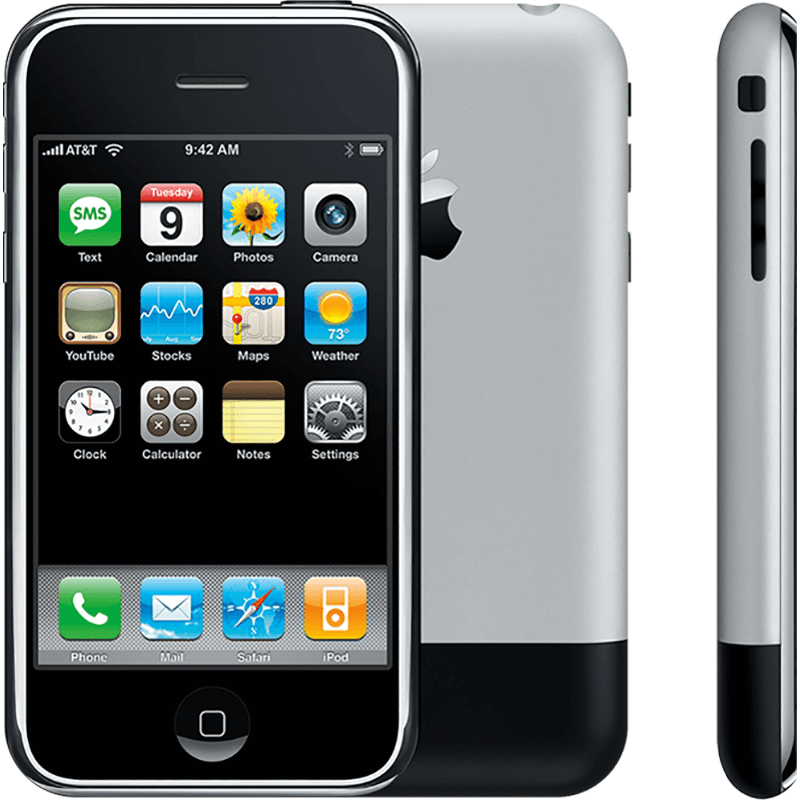
When the iPhone was released in 2007, the software used to run the phone was called iPhone OS 1 which came with the only 16 applications: Text, Calendar, Photos, Camera, Stocks, Weather, Clock, Calculator, Notes, Phone, Mail, Safari, iPod, Settings, YouTube, Maps, and eventually iTunes. During this time, there was no such thing as the App Store, so what you see is what you got with the iPhone 2G.
Originally, Google had partnered with Apple which is why Youtube and Google Maps where on the roster of applications on the iPhone. However, Apple had removed YouTube and Google Maps from the stock applications when Google and Apple had a dispute over the turn-by-turn directions feature in iOS 6 in 2012.
Google would not permit Apple to implement turn by turn directions on the iOS platform. They wanted to have free turn by turn a unique feature of the Android platform. For Apple to maintain parity in the market with Android, it had to come up with a solution to provide turn by turn directions. Thus the creation of Apple Maps.

When the iPhone first came out, website on the internet were not as mobile friendly as they are today. When browsing Safari, iPhone users typically got a screen view similar to desktop users when visiting a site. This meant a lot of zooming in and out in order to read articles and click on links. Below is a fine example of a website on mobile 10 years ago.
The New York Times home page in 2007
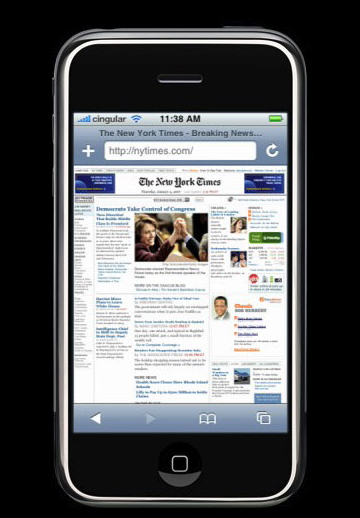
One thing that is notable about the original iPhone was how well it fit in the palm of your hand. How ergonomic it was to use. This is because it was designed to be useable with only one hand.
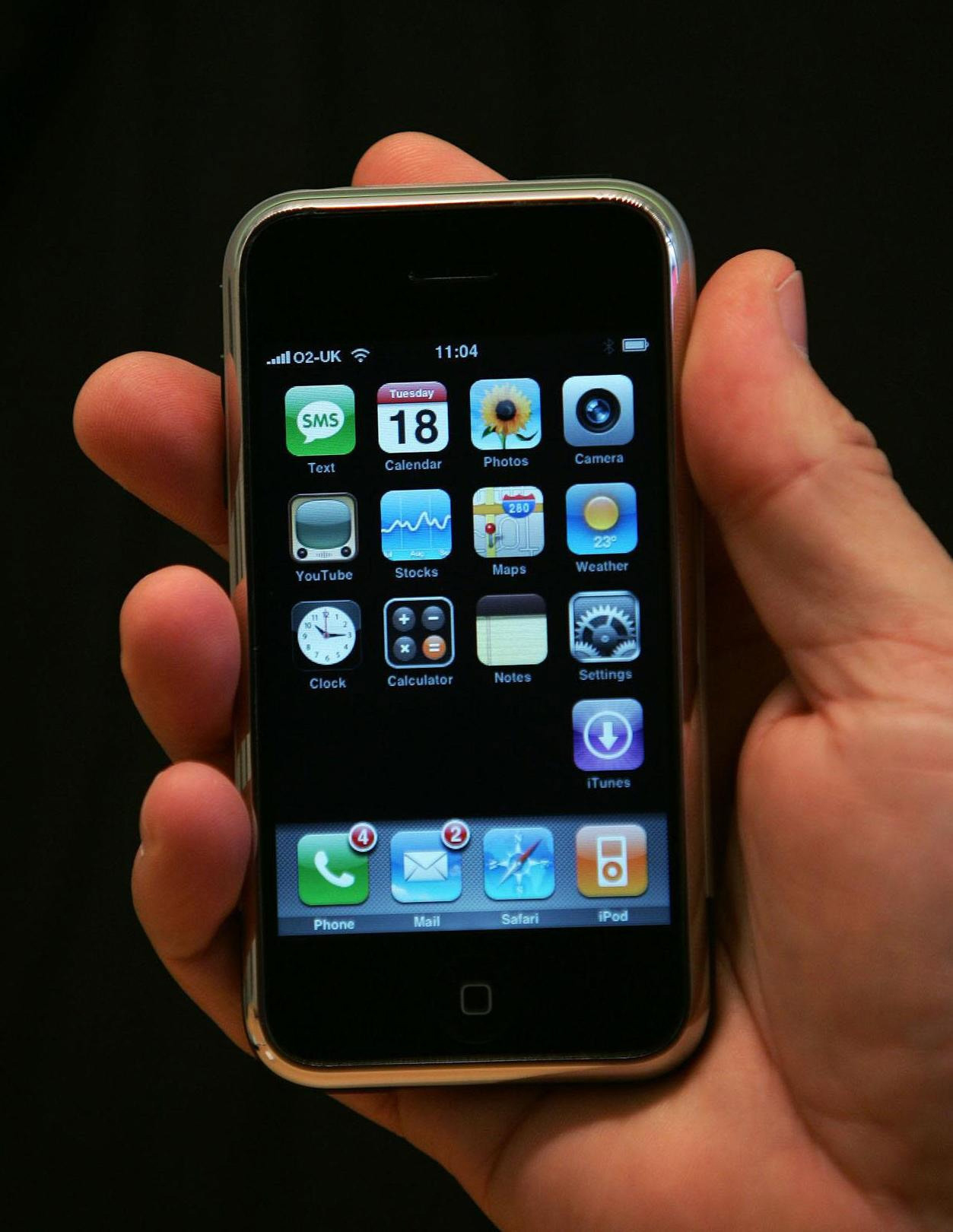
With it’s 3.5″ display, users were able to easily touch all corners of the screen using only their thumb when the phone was resting in their palm. Try doing that on today’s iPhone 7 plus 5.5″ screen.
Check out the size difference of the original iPhone released in 2007 (above) compared to the iPhone 7+ released in 2016 (below).
The hardware used in the original iPhone was minimal but revolutionary at the time. The processor used in this $599 phone is now used in the $35 Raspberry Pi Micro-computer. The rear camera was 2 Mega Pixels compared to the 12 Mega Pixels found in the iPhone 7+. It came with 128MB of RAM compared to 2GB (2,000MB) of RAM in the iPhone 7. And you could choose between a 4GB,8GB, or 16GB model. Today’s iPhones come in 32GB,64GB,128GB, and 256GB models.
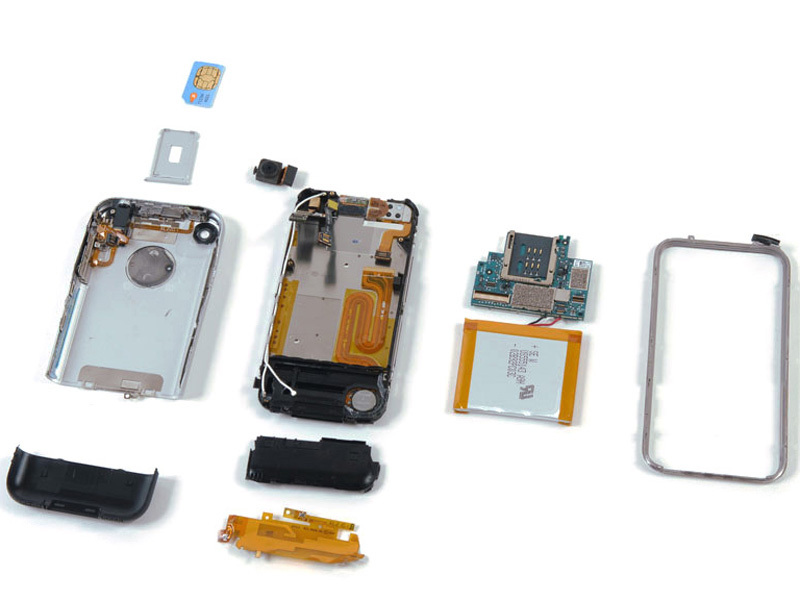
Original iPhone from 2007 (Above). iPhone 7 from 2016 (Below).
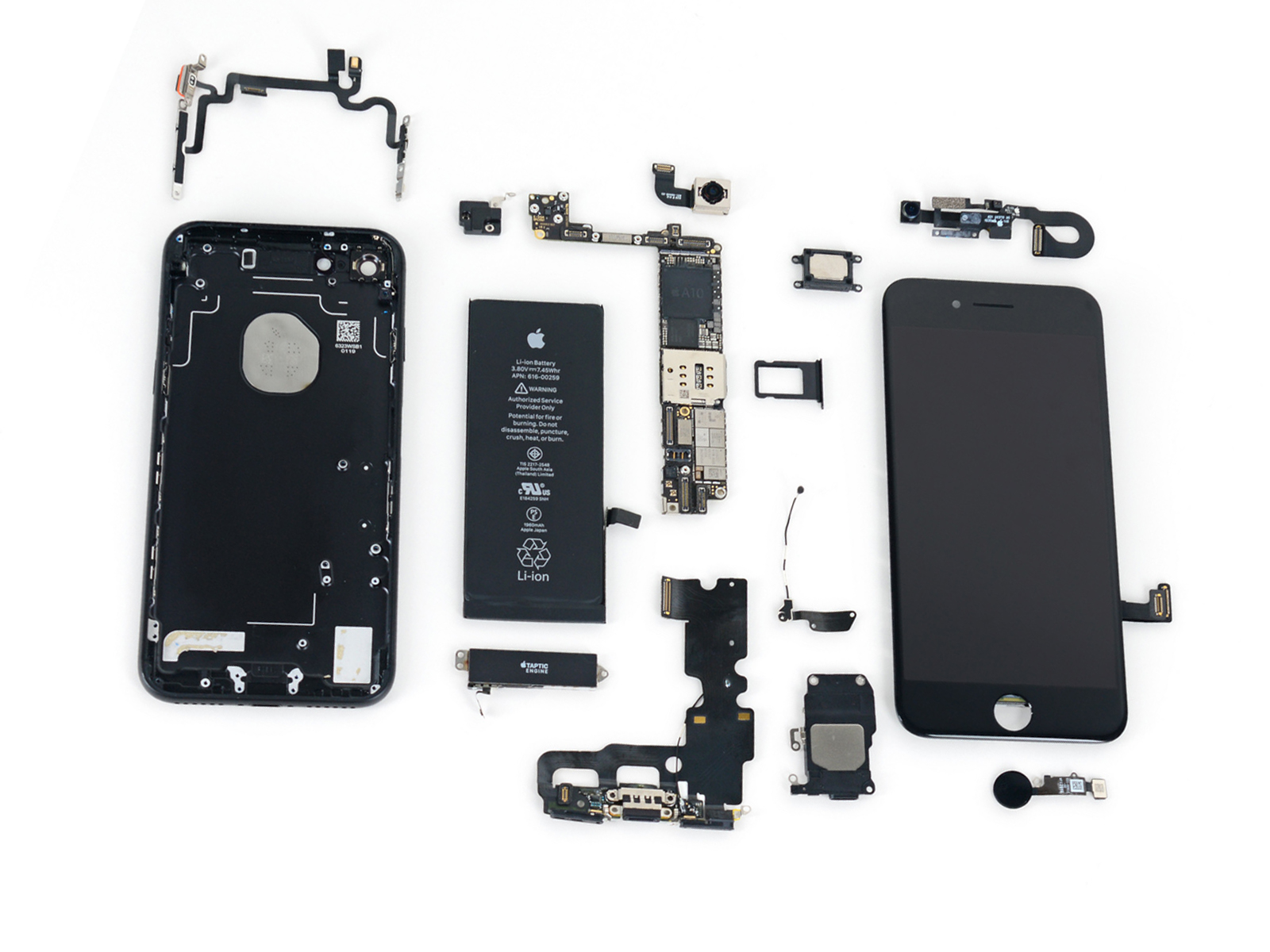
Since the release of the iPhone in 2007, we have seen some big advancements that we may take for granted. To name a few in iPhone today:
- The AppStore
- Video Recording
- Optical Zoom
- Flash
- Auto Focus
- Copy and Paste (iOS did not have this feature until 2009)
- Voice Control
- Wallpapers
- Custom Ringtones
- Siri
- Front Facing Cameras
- Face Time
- Better Frequency support (3g, 4g, 4gLTE)
- Dual Loud Speakers
- TouchID
- ForceTouch
- Taptic Feedback,
- NFC (ApplePay)
- Lightning Ports with USB 3.0 support
- iCloud BackUps
- Water Resistant Barrier
- And a Processor That is 120x Faster Than The Original iPhone
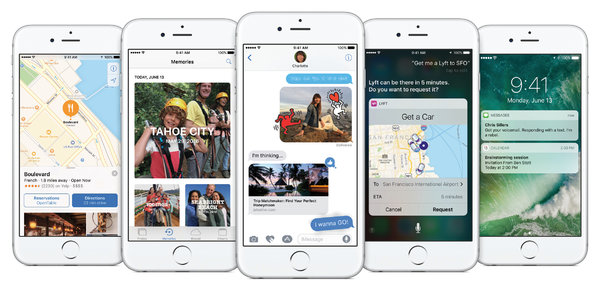
In short, the release of the iPhone in 2007 has shaped the way we interact with the world and each other. Many rumors speculate that Apple may do another redesign of the iPhone to commemorate the 10 year anniversary sometime in this Fall. Until then, let us appreciate how far consumer technology has advanced since 2007.
What feature do you use heavily and consider to be taken for granted nowadays? Please leave your comment below!

